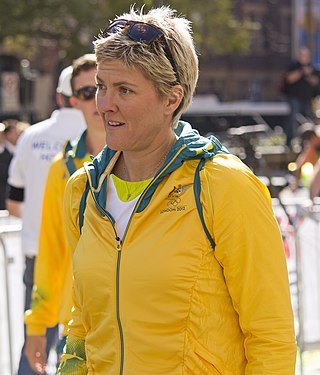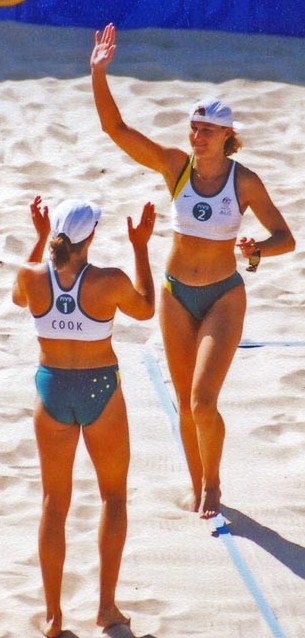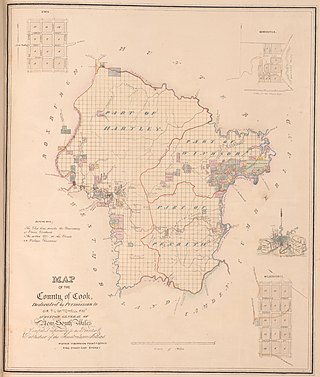
The Cook Islands is a self-governing island country in the South Pacific Ocean in free association with New Zealand. It comprises 15 islands whose total land area is 240 square kilometres (93 sq mi). The Cook Islands' Exclusive Economic Zone (EEZ) covers 1,960,027 square kilometres (756,771 sq mi) of ocean.

Captain James Cook was a British explorer, cartographer and naval officer famous for his three voyages between 1768 and 1779 in the Pacific Ocean and to New Zealand and Australia in particular. He made detailed maps of Newfoundland prior to making three voyages to the Pacific, during which he achieved the first recorded European contact with the eastern coastline of Australia and the Hawaiian Islands, and the first recorded circumnavigation of New Zealand.

James Cook University (JCU) is a public university in North Queensland, Australia. The second oldest university in Queensland, JCU is a teaching and research institution. The university's main campuses are located in the tropical cities of Cairns and Townsville, and one in the city state of Singapore. JCU also has study centres in Mount Isa, Mackay, Thursday Island and Rockhampton. A Brisbane campus, operated by Russo Higher Education, delivers undergraduate and postgraduate courses to international students. The university's main fields of research include environmental sciences, biological sciences, mathematical sciences, earth sciences, agricultural and veterinary sciences, technology and medical and health sciences.

HMS Endeavour was a British Royal Navy research vessel that Lieutenant James Cook commanded to Australia and New Zealand on his first voyage of discovery from 1768 to 1771.

Townsville is a city on the north-eastern coast of Queensland, Australia. With a population of 180,820 as of June 2018, it is the largest settlement in North Queensland; it is unofficially considered its capital. Townsville hosts a significant number of governmental, community and major business administrative offices for the northern half of the state.
James Cook (1728–1779) was a British explorer, navigator, and map maker.

Natalie Louise Cook is an Australian professional beach volleyball player and Olympic gold medallist. She became the first Australian woman to compete at five Olympic Games.

James Baxter was an English rugby union player and manager.

Kerri Ann Pottharst OAM is an Australian former professional beach volleyball player and Olympic gold medallist.

Botany Bay is an open oceanic embayment, located in Sydney, New South Wales, Australia, 13 km (8 mi) south of the Sydney central business district. Its source is the confluence of the Georges River at Taren Point and the Cooks River at Kyeemagh, which flows 10 km (6 mi) to the east before meeting its mouth at the Tasman Sea, midpoint between the suburbs of La Perouse and Kurnell. The northern headland of the entrance to the bay from the Tasman Sea is Cape Banks and, on the southern side, the outer headland is Cape Solander and the inner headland is Sutherland Point.

The Cooks River, a semi-mature tide-dominated drowned valley estuary, is a tributary of Botany Bay, located in south-eastern Sydney, New South Wales, Australia.

On behalf of the Cook Islands, the Cook Islands Sports and Olympic Association (renamed the Cook Islands Sports and National Olympic Committee in 2002 sent a team that competed at the 2000 Summer Olympics in Sydney, Australia.

RAAF Williams is a Royal Australian Air Force (RAAF) military air base set across two locations, at Point Cook and Laverton, located approximately 20 kilometres (12 mi) south-west of the Melbourne central business district in Victoria, Australia. Both establishments previously existed as separate RAAF Bases until 1989 when they were amalgamated to form RAAF Williams. The name was chosen in honour of Air Marshal Sir Richard Williams, the 'father' of the RAAF.

Cook and Westmoreland was an electoral district of the Legislative Assembly in the Australian state of New South Wales in the first and second Parliaments (1856–1859), named after Cook and Westmoreland counties in the Blue Mountains, Lithgow and Oberon areas. It elected two members simultaneously, with voters casting two votes and the first two candidates being elected. It was largely replaced by Hartley, however both members moved to other electorates, James Martin became the member for East Sydney, while Robert Jamison became the member for Nepean.

The first voyage of James Cook was a combined Royal Navy and Royal Society expedition to the south Pacific Ocean aboard HMS Endeavour, from 1768 to 1771. It was the first of three Pacific voyages of which James Cook was the commander. The aims of this first expedition were to observe the 1769 transit of Venus across the Sun, and to seek evidence of the postulated Terra Australis Incognita or "undiscovered southern land".

James Cook Boys Technology High School is a boys' secondary school situated on Princes Highway in Kogarah, Australia. The school is named after Captain James Cook, the first recorded European contact with the eastern coastline of Australia.

Cooktown is a coastal town and locality in the Shire of Cook, Queensland, Australia. Cooktown is at the mouth of the Endeavour River, on Cape York Peninsula in Far North Queensland where James Cook beached his ship, the Endeavour, for repairs in 1770. Both the town and Mount Cook which rises up behind the town were named after James Cook.

Cook Islands competed at the 2016 Summer Olympics in Rio de Janeiro, Brazil, from 5 to 21 August 2016. This was the nation's eighth consecutive appearance at the Summer Olympics.
The Birri Gubba people, formerly known as Biria, are an Aboriginal Australian people of the state of Queensland.
Izaac Stubblety-Cook is an Australian swimmer. He is the world record holder in the long course 200 metre breaststroke.














